1. THERE’S NOT A LOT OF JAWS IN JAWS.
Daah dun, daah dun, daah dun, dun dun, dun dun, dun dun. 2016 is the 41st anniversary of Steven Spielberg’s original blockbuster, Jaws.
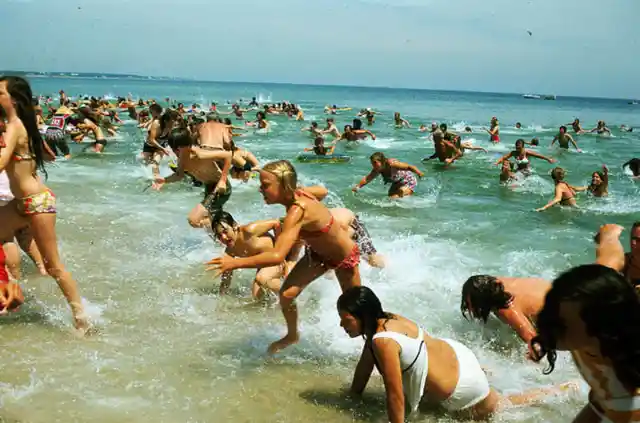
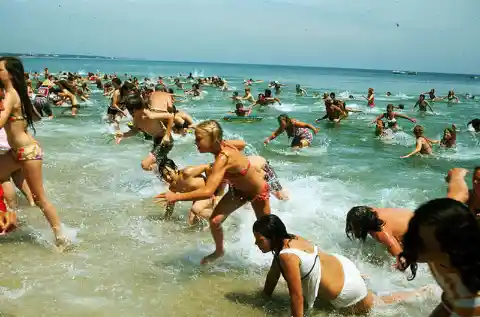
Here are 25 fascinating facts you may not have known about the Oscar-winning shark flick.
The shark doesn’t fully appear in a shot until one hour and 21 minutes into the two-hour film.
2. THE BOOK COULD HAVE BEEN CALLED SOMETHING ENTIRELY DIFFERENT.
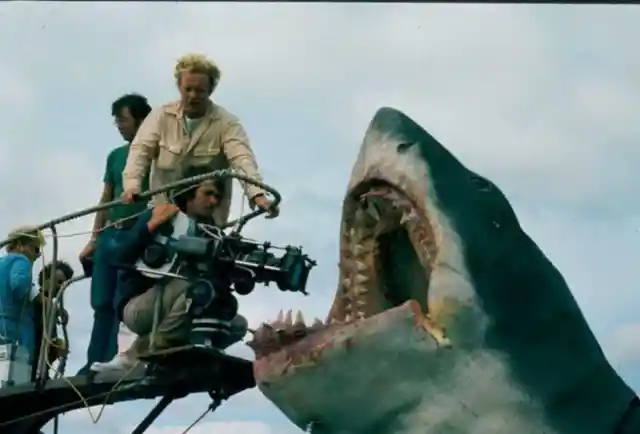
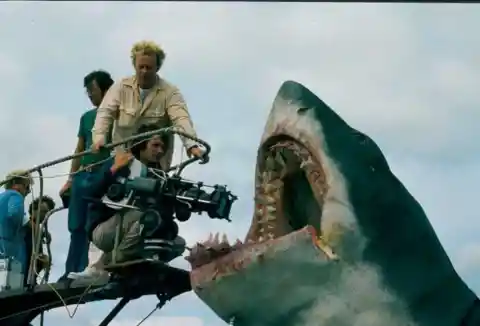
The reason it isn’t shown is because the mechanical shark that was built rarely worked during filming, so Spielberg had to create inventive ways (like Quint’s yellow barrels) to shoot around the non-functional shark.
The film is adapted from author Peter Benchley’s bestselling novel of the same name, which Benchley based on a series of shark attacks that occurred off the coast of New Jersey in 1916 and after an incident where a New York fisherman named Frank Mundus caught a 4,500-pound shark off the coast of Montauk in 1964.
3. THE BOOK’S AUTHOR MAKES A CAMEO IN THE MOVIE.
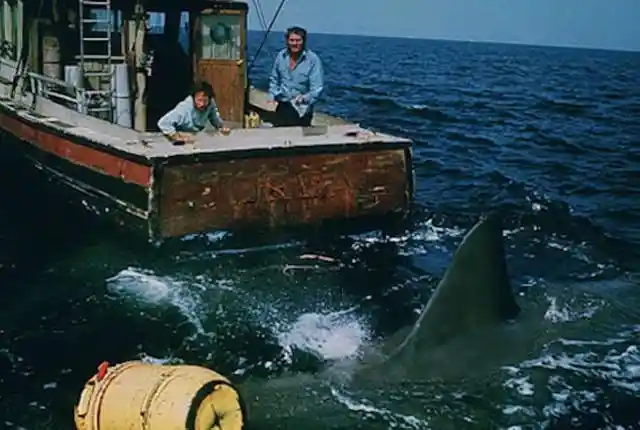
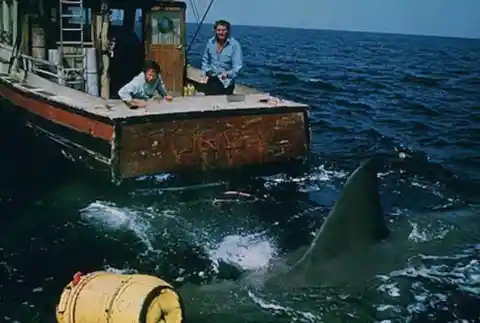
Other title ideas Benchley had before settling on Jaws were “The Stillness in the Water,” “The Silence of the Deep,” “Leviathan Rising,” and “The Jaws of Death."
Benchley himself can be seen in a cameo in the film as the news reporter who addresses the camera on the beach. Benchley had previously worked as a news reporter for the Washington Post before penning Jaws.
4. SPIELBERG GOT THE DIRECTING JOB BECAUSE OF DUEL.
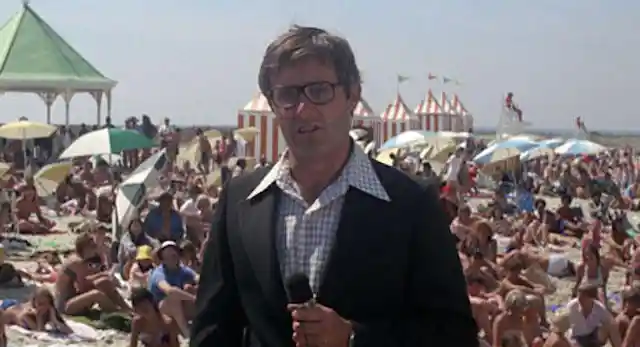
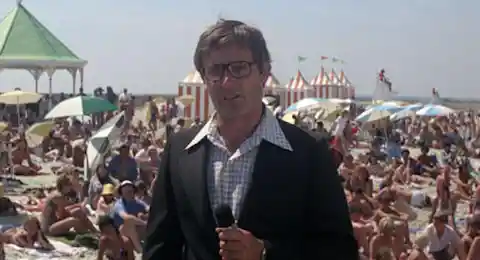
Steven Spielberg also makes a cameo in the movie: His voice is the Amity Island dispatcher who calls Quint’s boat, the Orca, with Sheriff Brody’s wife on the line.
Spielberg was chosen to direct Jaws by producers Richard Zanuck and David Brown (who had also worked with the then-28-year-old director on his 1974 film The Sugarland Express) because of his film Duel, which featured a maniacal trucker terrorizing a mild-mannered driver.
5. IT TOOK A VERY LONG TIME TO MAKE
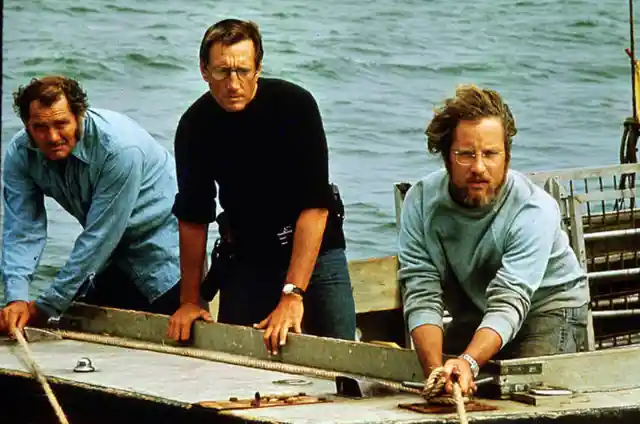
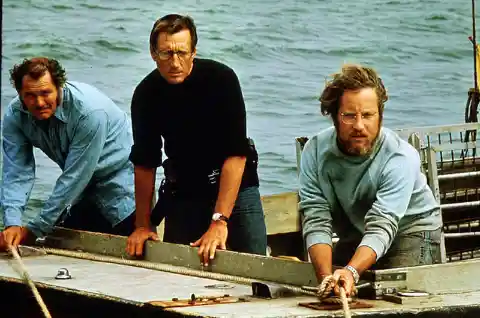
The producers thought the movie was thematically similar to the story for Jaws, making Spielberg a great fit.
6. AMITY ISLAND WAS ACTUALLY MARTHA’S VINEYARD.
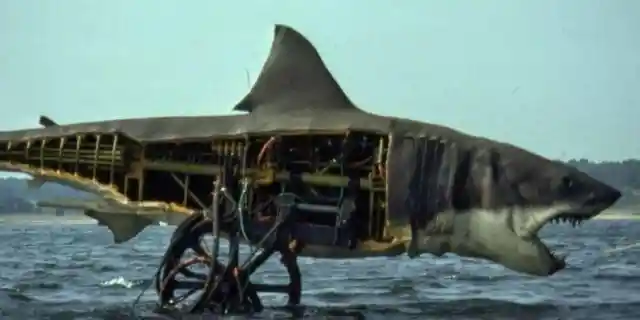
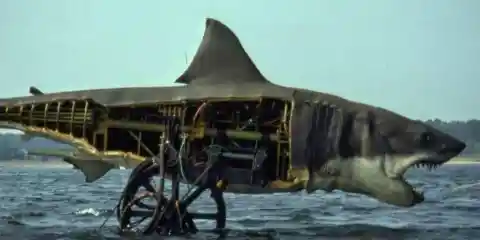
Jaws was marred with so many technical problems (including the shark not working and shooting in the Atlantic Ocean) that the originally scheduled 65-day shoot ballooned into 159 days, not counting post-production.
To create the fictional town of Amity, the production shot on location in Edgartown and Menemsha on Martha’s Vineyard in Massachusetts.
7. THE SHARK WEIGHED MORE THAN A TON.
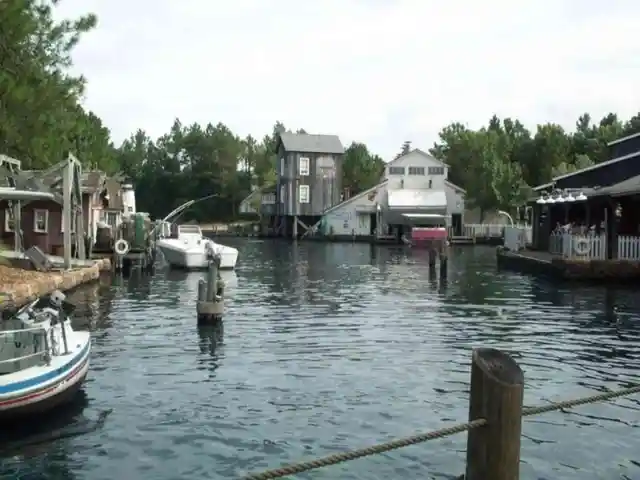
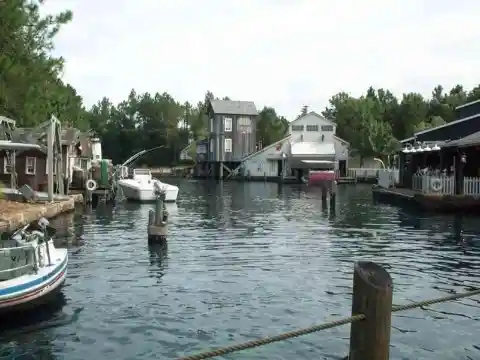
Strict land ordinances kept the production from building anywhere—Quint’s shack was the one and only set built for the movie, while the defaced Amity Island billboard had to be constructed and taken down all in one day.
The pneumatically-powered shark, designed and built by production designer Joe Alves, weighed in at 12 tons and measured 25 feet in length.
8. SPIELBERG TOOK INSPIRATION FROM HIS LEGAL COUNSEL.
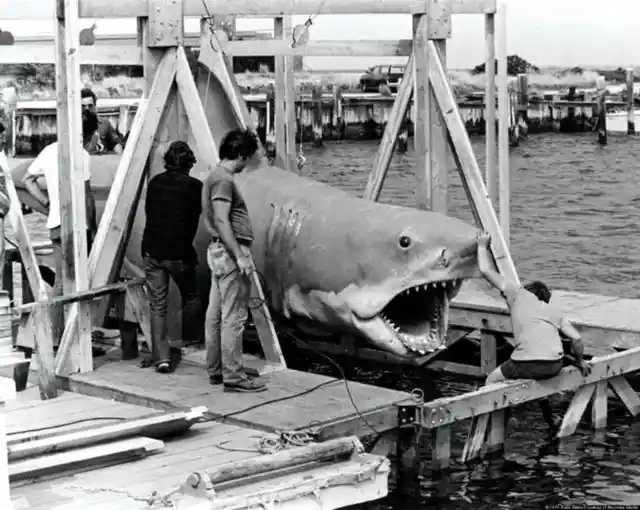
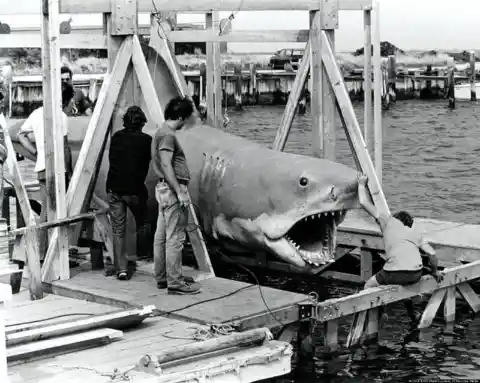
Part of the reason that Martha’s Vineyard was chosen as a location was because the surrounding ocean bed had a depth of 35-feet for up to 12 miles offshore, which was perfect for scenes that required the mechanical shark rig to be rested on the shallow ocean floor.
9. SOME GOOD, OLD-FASHIONED ELBOW GREASE HELPED CREATE THE OPENING SCENE.
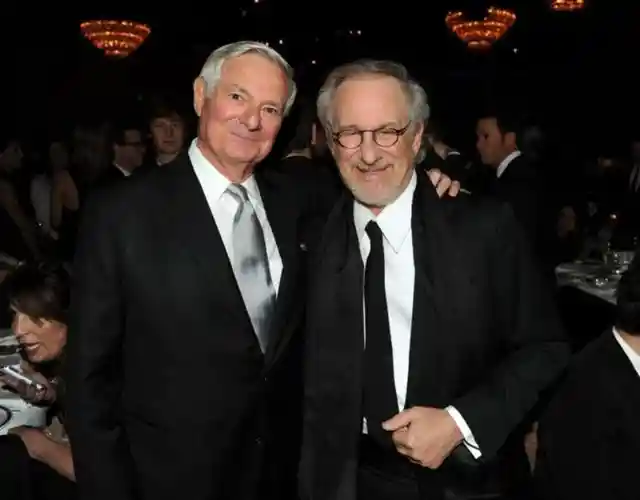
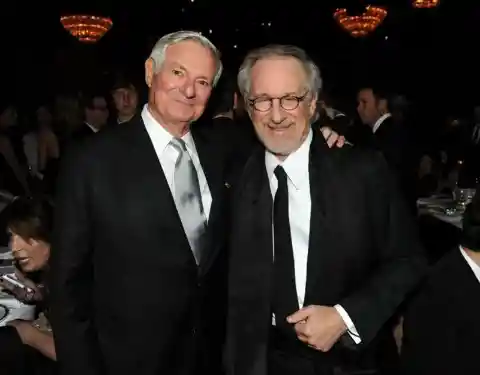
The director nicknamed the shark “Bruce” after his lawyer, Bruce Ramer, who also currently represents other celebrities like Demi Moore, Ben Stiller, and Clint Eastwood.
The opening scene took three days to shoot. To achieve the jolting motions of the shark attacking the swimmer in the opening sequence, a harness with cables was attached to actress Susan Backlinie’s legs and was pulled by crewmembers back and forth along the shoreline. Spielberg told the crew not to let Backlinie know when she would be yanked back and forth, so her terrified reaction is genuine.
10. SOME EAVESDROPPING GOT ROY SCHEIDER THE LEAD.
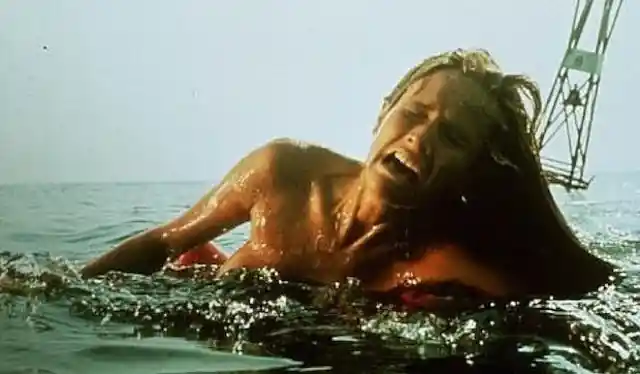
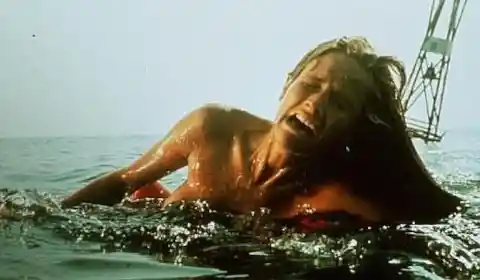
Spielberg went on to spoof his own opening scene for Jaws in his 1979 World War II comedy 1941. The scene features Backlinie once again taking a skinny dip at the beach, but instead of being attacked by a shark she’s scooped up by a passing Japanese submarine.
Scheider got the part of Chief Martin Brody after overhearing Spielberg talking to a friend at a Hollywood party about the scene where the shark leaps out of the water and onto Quint’s boat. Scheider was instantly enthralled, and asked Spielberg if he could be in the film.
11. RICHARD DREYFUSS WASN’T THE FIRST CHOICE TO PLAY HOOPER.
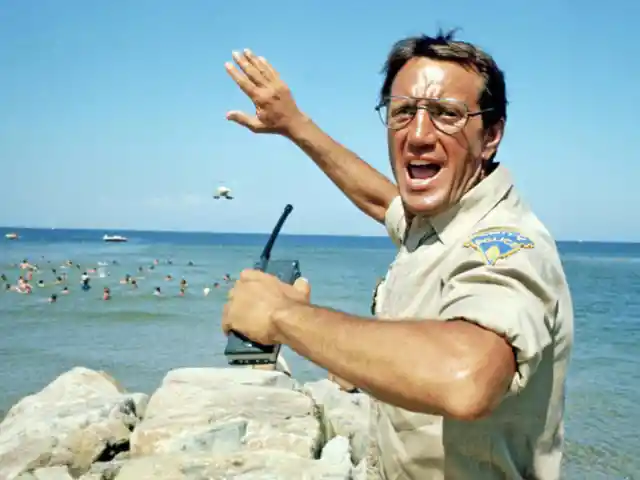
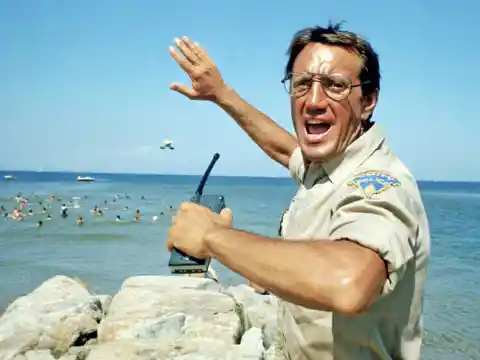
Spielberg loved Scheider from his role in The French Connection, and later offered the actor the part.
Spielberg initially approached Jon Voight, Timothy Bottoms, and Jeff Bridges to play oceanographer Matt Hooper. When none of them could commit to the role, Spielberg’s friend George Lucas suggested Richard Dreyfuss, whom Lucas has directed in American Graffiti.
12. ROBERT SHAW WASN’T THE FIRST CHOICE TO PLAY QUINT.
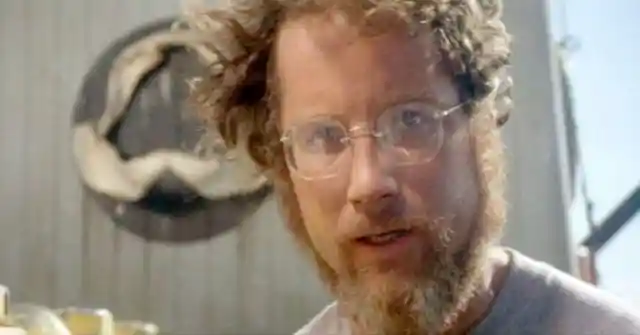
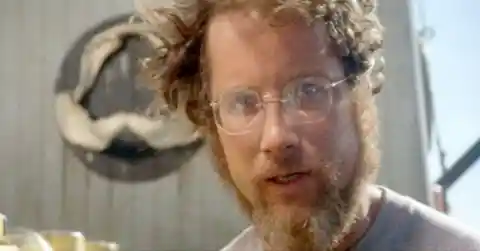
Dreyfuss would later accept the part because he thought he was terrible in the title role of the film The Apprenticeship of Duddy Kravitz a year earlier.
13. A LOCAL MARTHA’S VINEYARD FISHERMAN WAS THE REAL QUINT.
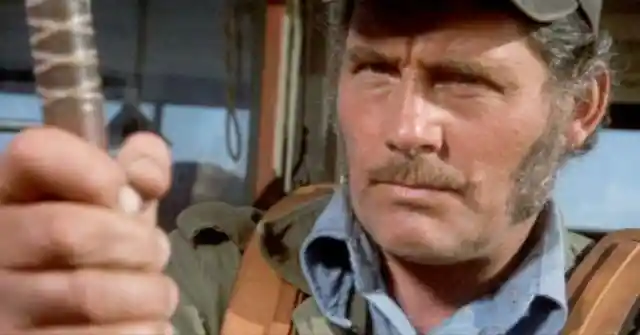
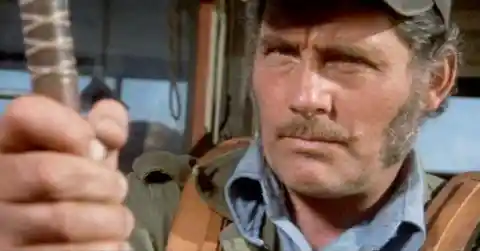
When actors Lee Marvin and Sterling Hayden—the first and second choices to play the grizzled fisherman Quint, respectively—both turned Spielberg down, producers Zanuck and Brown recommended English actor Robert Shaw, whom they had previously worked with on 1973's The Sting.
Shaw based his performance of Quint on Martha’s Vineyard native and fisherman Craig Kingsbury, a non-actor who appears in the film as Ben Gardner. Kingsbury helped Shaw with his accent and allegedly told Shaw old sea stories that the actor incorporated into his improvised dialogue as Quint.
14.
15. THE BOOK WAS VERY DIFFERENT FROM THE MOVIE.
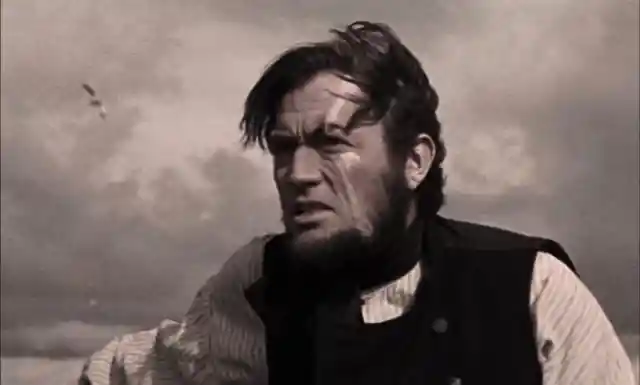
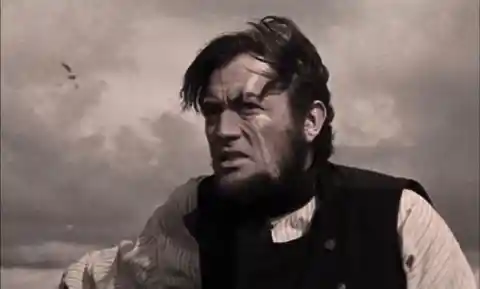
GREGORY PECK FORCED A SCENE TO BE CUT FROM THE MOVIE.
In early drafts of the screenplay, Quint was originally introduced while causing a disturbance in a movie theater while watching John Huston’s 1958 adaptation of Moby Dick. The scene was shot, but actor Gregory Peck—who plays Captain Ahab in that movie—owned the rights to the film version of Moby Dick and wouldn’t let the filmmakers on Jaws use the footage, so the sequence was cut.
Early drafts of the screenplay featured a subplot where Hooper has an affair with Chief Brody’s wife, which was carted over from the book.
16. SPIELBERG ADDED AN OFFSCREEN IMPROV MOMENT.
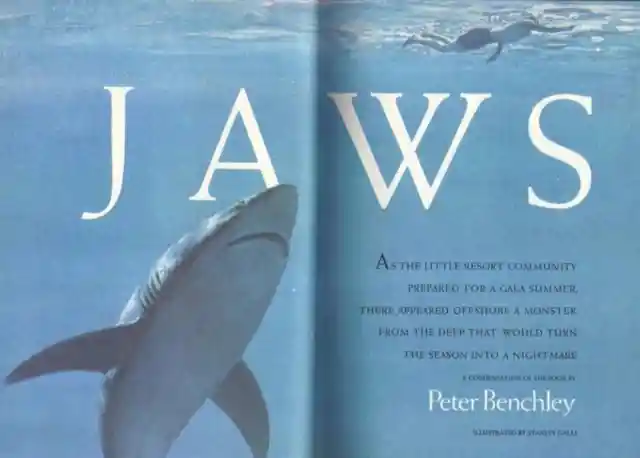
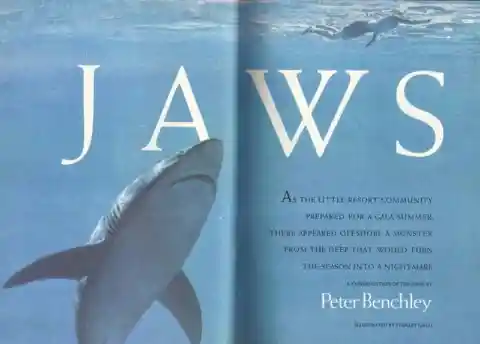
Another detail left out of the movie from the book was that Mayor Vaughn was under pressure from the mafia, not local business owners, to keep Amity’s beaches open because of their real estate investments on the island.
The scene where Brody’s son Sean mimics his father’s movements at the dinner table was based on a real thing that happened between Scheider and child actor Jay Mello in between takes. Spielberg loved the off-the-cuff moment so much that he re-staged it and put it in the movie.
17. ROBERT SHAW PUT HIS OWN SPIN ON THE INDIANAPOLIS SPEECH.
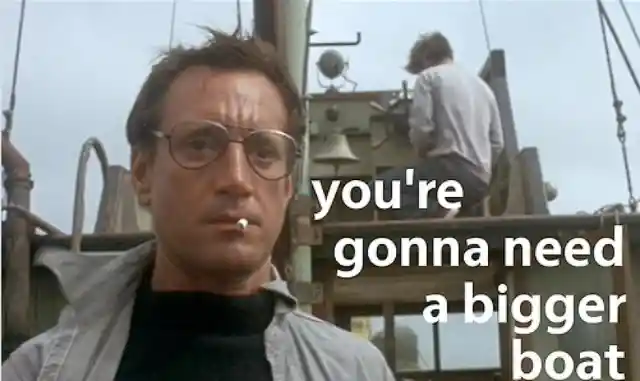
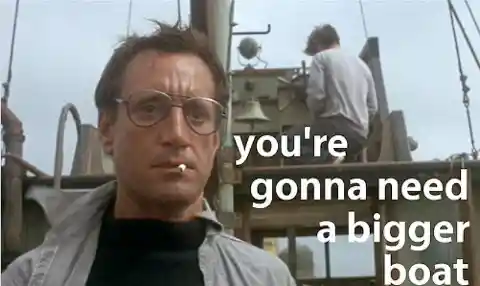
Another iconic moment was also a spontaneous one: Brody’s famous “You’re gonna need a bigger boat” line was entirely improvised by Scheider on the day of shooting.
Quint’s U.S.S. Indianapolis speech wasn’t in the novel, and the backstory of Quint being a sailor on the ship first appeared in an uncredited rewrite of the script by playwright Howard Sackler.
18. SOME REAL SHARK FOOTAGE WAS USED.
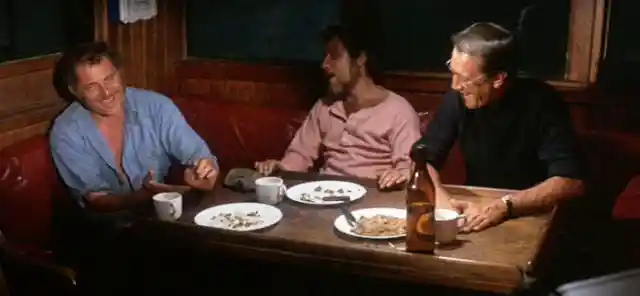
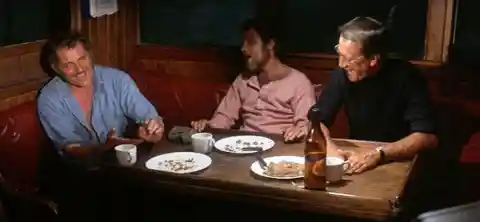
Later, writer-director (and Spielberg’s friend) John Milius expanded the characteristic into a multi-page monologue, which was then whittled down and spruced up by actor Robert Shaw (himself a playwright) on the day of shooting.
Zanuck demanded that real shark footage be used in the movie, and Spielberg used it sparingly. He hired experts Ron and Valerie Taylor to shoot underwater footage of 14-foot sharks off the coast of Australia. For scale, they hired a little person actor named Carl Rizzo to appear as Hooper in a mini shark cage in hopes that they could create the illusion of a shark attacking the character.
19. DESPITE ALL THE BLOODY SHARK ATTACKS, THE MOVIE IS RATED PG.
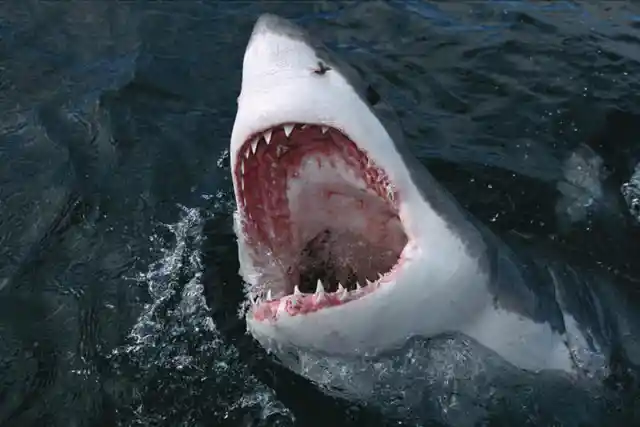
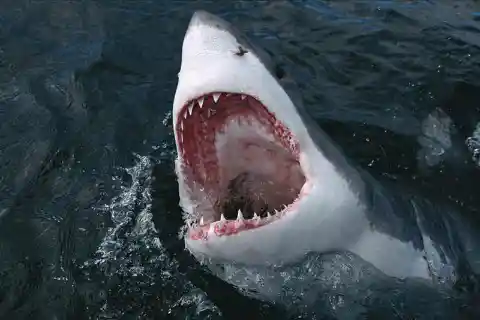
After trying to get the right shot for about a week, the sharks would only swim around the cage. Then, during a take when Rizzo wasn’t in the cage, a shark became entangled in the cage’s bridle, causing it to thrash and roll around. This footage was included in the final film.
Jaws was initially rated R by the MPAA. But after some of the more gruesome frames of the shot showing the severed leg of the man attacked by the shark in the estuary were trimmed down, the film was given a PG-rating (the PG-13-rating wasn’t created until after Spielberg’s own film, Indiana Jones and the Temple of Doom, caused the MPAA to change the system in 1984).
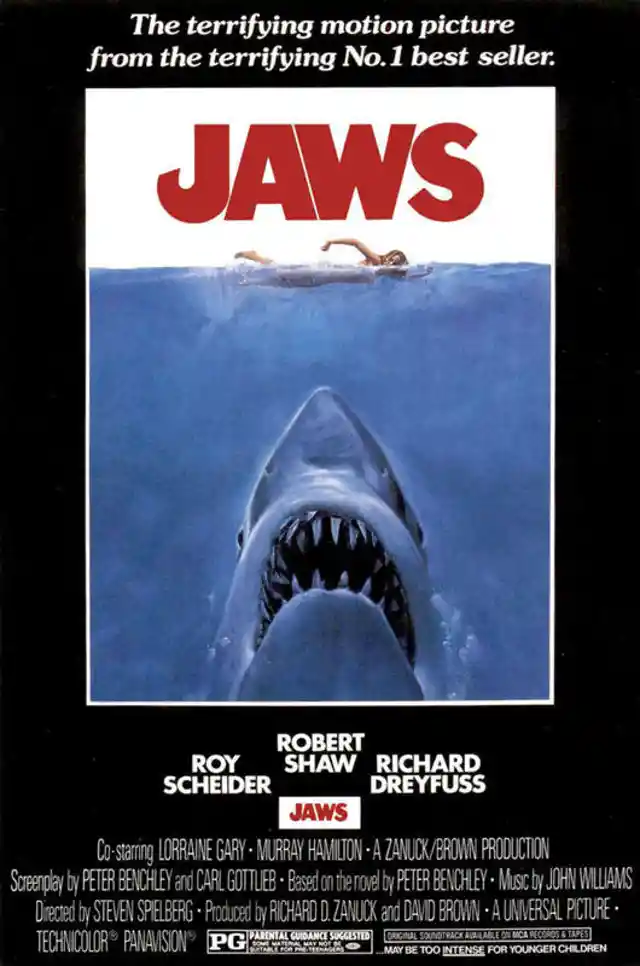
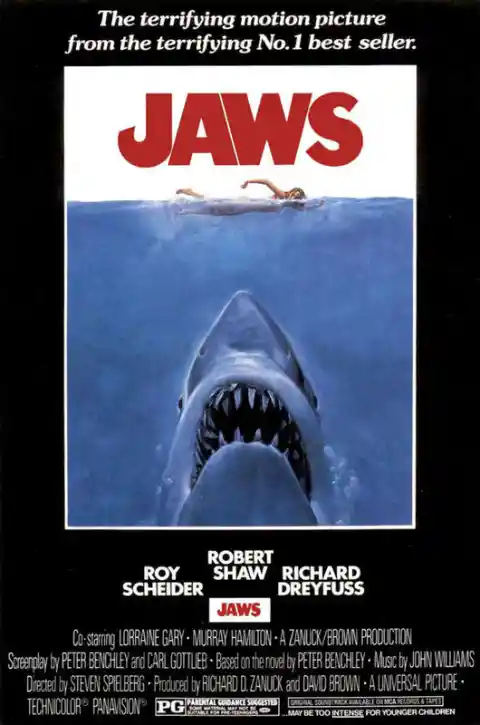
The poster for the film still reads that the movie “MAY BE TOO INTENSE FOR YOUNGER CHILDREN.”